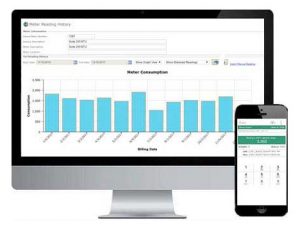Understanding Building Submeters
Have your tenants asked you to submeter their commercial space yet? If not, they probably will soon! With submetering, your tenants are sure that their bills and leasing structure are just, that they have a return on investment of their individual energy conservation projects, and that they can proudly identify as sustainability leaders.
Most building tenants pay for their space’s utility bills by square foot, but this can be a problem for those units that have lower energy consumption but larger areas.

What is a Submeter?
Submeters are devices that monitor utilities like water, gas, electricity, and steam. Utilities sell their services and with utility grade meters they are able to gather the information on how much of those services are used.
Submeters mirror this type of data collection and send information through your business management system at regular intervals in order to monitor usage, such as electricity usage.
How Submeters Work
Submeters are connected to each line and as the electricity, water, gas, or other product passes through it, it tracks the total consumption per unit.
Types of Submeters
There are two main types of submeters: networked and non-networked. Networked submeters are directly connected to a data collection device wirelessly or they can be wired.
Non-networked meters do not directly connect to the data hub and have to be read manually. Non-networked submeters are just like the meters used by the service companies that are read each month.
What is the Difference Between Metering and Submetering?
Submetering is only a fraction of the overall metering system. Basically, metering is the building as a whole and all of the utilities that are used in it whether its gas, electricity, or water. Submetering is a subsection of that, breaking down each individual's usage for said utility. This allows the property management company to bill each individual appropriately based on their usage.
Submetering is a Good Management Practice
Through submetering property management companies are able to better manage their energy budgets and reduce overall consumption. Submetering holds each individual tenant accountable for their own usage and helps them understand their consumption and energy costs. When tenants have to pay for their own usage, they will be more mindful and conservative of their resources.
Submetering not only saves energy and ensures a more eco-friendly building, it also lowers the overall utility cost of the building, increasing the property’s bottom line.
Submetering data allows you to:
- Identify what equipment is running unnecessarily on the weekends, when no one is at the office, or at night.
- Benchmark usage for similar facilities over different time periods.
- Implement best practices to manage usage based on utility pricing structures.
To learn more about the benefits of submetering in your building, view our Online Learning Center and order the webinar How to Use Submeters in Your Building.

